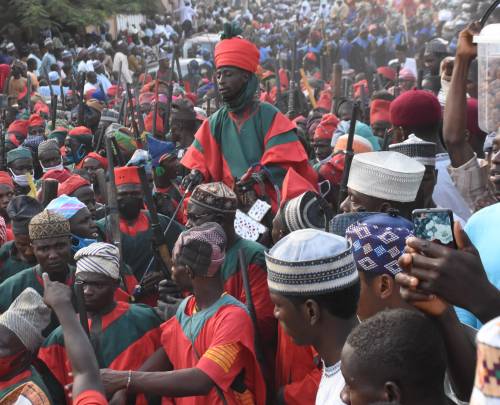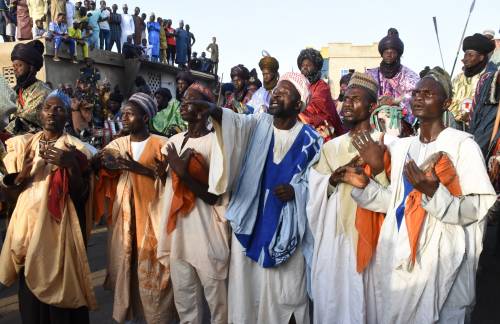Durbar in Kano
Inscribed in 2024 (19.COM) on the Representative List of the Intangible Cultural Heritage of Humanity

In Nigeria, Durbar is a procession of about 10,000 men on horses, and men and women on foot. It takes place during the ninth and twelfth months of the Muslim calendar to mark the Eid el-Fitr and Eid el-Kabir every year. The central figure of the Durbar procession is the Emir and his palace courtiers, officials and bodyguards. There are four processions, each serving a specific purpose and having its own timing and costumes. Each procession begins with gun salutes at one of the three gates to the Emir’s palace and ends with the same gun salutes at a different gate. Much of the knowledge and skills related to Durbar – including leather work, weaving, dyeing, embroidery and blacksmithing – are transmitted through informal training and hands-on practice within groups. Certain skills, such as horse preparation, riding and drumming, are taught on a weekly basis and intermittently. Durbar unites people of all ethnicities, genders and ages, and is an opportunity to showcase the skills and practices of the different tribes of the community. The Emir’s procession passes through the various quarters to acknowledge their contributions to community development. By paying homage to their Emir, the people express their acceptance and support.









